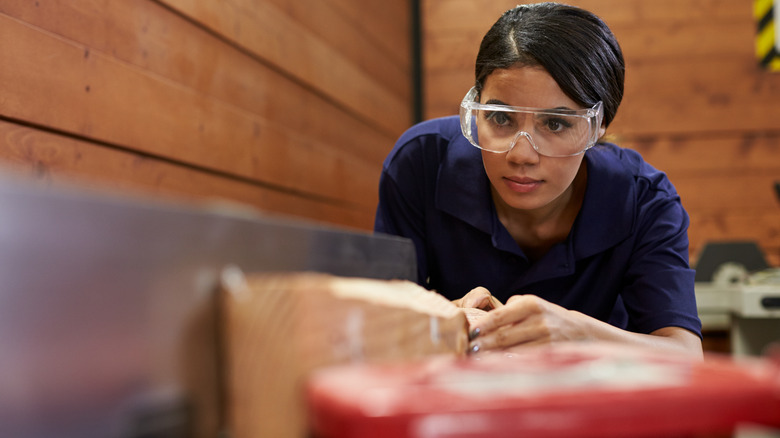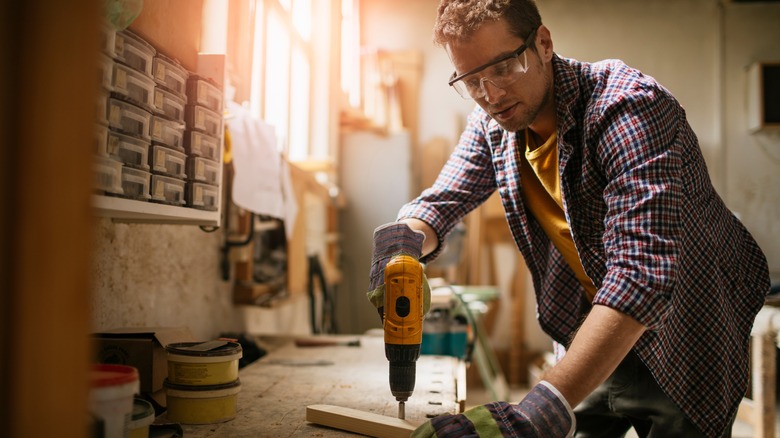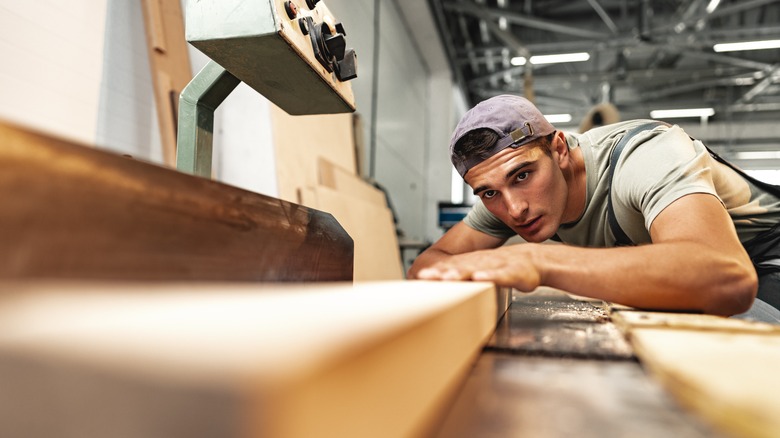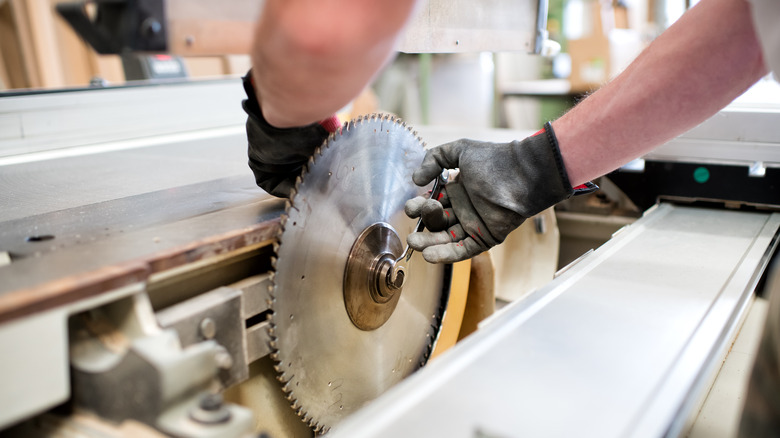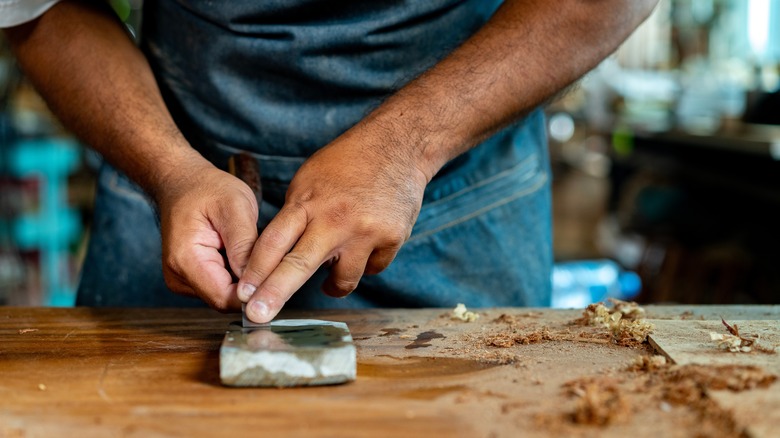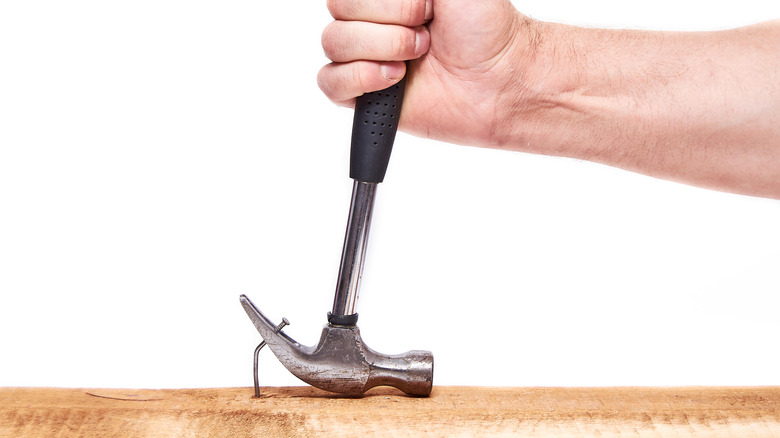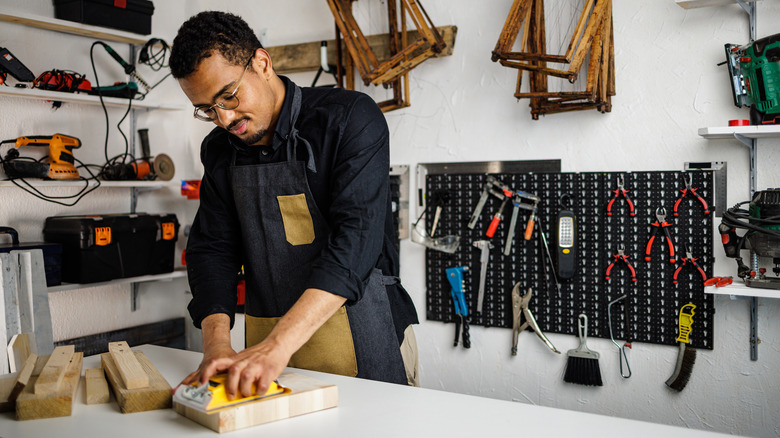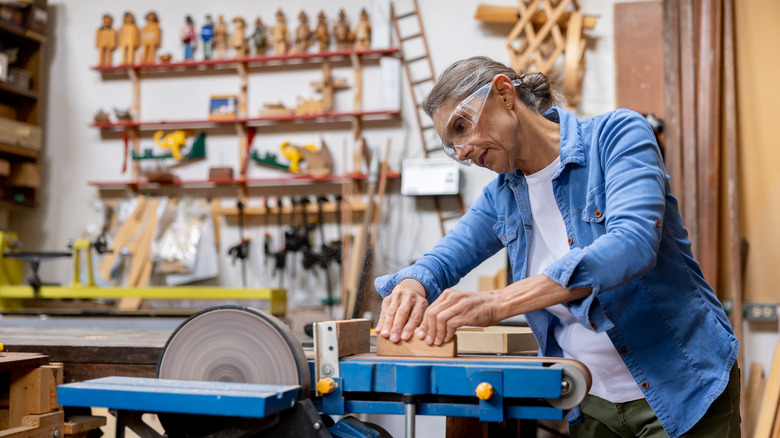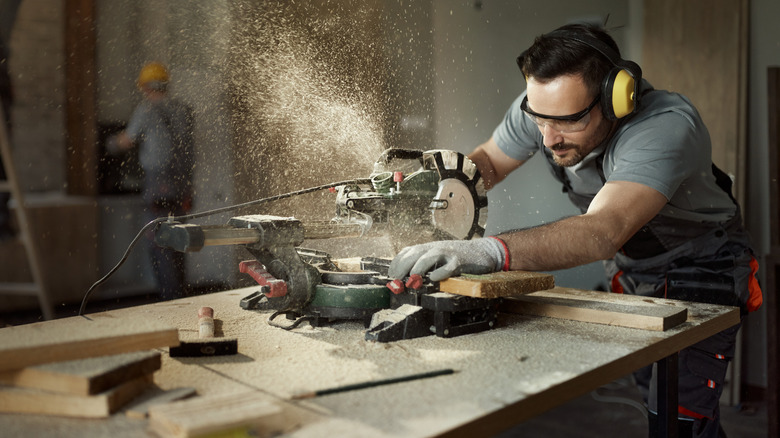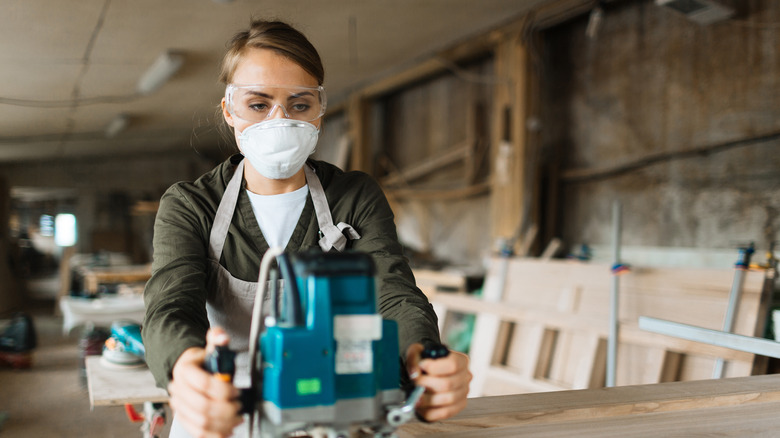Safety Tips Every Beginner Woodworker Should Follow While Improving Their Home
Woodworking is a rewarding passion. While fulfilling your artistic inclinations, you're also making improvements and adding more comfort and functionality to your home. In fact, there are many woodworking projects even beginners can do. At the same time, working so closely with power tools can be quite dangerous. At any moment, you're only a few inches away from a rotating blade or bit. Any slip, lapse of concentration, or loss of focus can have serious repercussions. As a beginner woodworker, safety should be your top concern to avoid unfortunate mishaps.
However, operating power tools is only one of the many hazards that woodworkers have to deal with. The deafening noise and the incredible amount of wood dust in your workstation also pose serious health risks. Safety with woodworking is a complex issue that covers everything from what you wear during work to how you navigate your way around the extension cords and tools. If you're new to woodworking and can't wait to get started on your DIY project, these safety tips are for you. They simplify the woodworking safety precautions you need to take and explain how to keep yourself and your workstation safe and hazard-free at all times.
Wear safety gear and glasses but avoid jewelry and other accessories
"Safety first" at work isn't just a motto. When working with woodcutting tools, your whole body is in the danger zone. But your hands and eyes, in particular, are quite vulnerable. With sawdust and wood chips flying around, if some get into your eyes and impair your vision, accidents could happen. The first thing you need to do before you start work is to put on safety glasses or goggles. Make sure they wrap around your eyes without obstructing your peripheral vision. Next, a pair of fitting latex gloves will keep your hands protected from splinters and debris. And remember to remove the gloves when operating the machines, else they get caught in the blades.
But even with the goggles and gloves on, you're still not ready to start work. You need to inspect your clothes and check if you're wearing any jewelry or accessories that could become hazardous near power tools. Rings, necklaces, bracelets, and other metal jewelry are some of the main causes of injuries, electric shock, and burns at woodworking stations. Before starting work, remember to take off any accessories.
Don't work when feeling physical or mental fatigue
Being near electric saws, power drills, and power sanders, you need to have your wits about you. When you're tired, either physically or mentally, it's easy to make costly mistakes, lose your balance, or get yourself injured. Furthermore, since woodworking is all about precision, there's a chance your judgment will suffer because of your fatigue, and your work will not meet your expectations. When you're making the wrong cuts in the wood and wasting a lot of materials, that's a sign you're getting tired. Or, if you have been working for long hours without taking a break, maybe it's time to call it a day.
The reasons you're tired or unable to concentrate on work might not have to do with unreasonable work hours. It might have to do with hunger or lack of sleep, or you just have a lot on your mind. Being hungry can distract you from operating the power tool properly and cause accidents. The same goes for being frustrated with something or trying to rush and power through fatigue. Any time you find yourself getting impatient with what you're working on or throwing things around, that's when you should stop.
Unplug power tools before changing or adjusting bits and blades
There are many tools worth investing in to start woodworking at home. As you get familiar with your woodworking tools, you'll notice that many power tools allow you to change the drill bits and cutting blades to refine your work. You might be tempted to change those parts on the fly with the machine still running or plugged in. But don't overestimate your dexterity. No matter how agile and alert you think you are, you're no match for an electric-powered tool. Keeping the piece of equipment powered while you fiddle with the blade or cutter is only asking for trouble and could lead to serious injuries. Safety protocols strongly recommend switching off and unplugging the machine or tool before making the necessary changes or repairs. Also, avoid touching the cutter or drill bit immediately after switching off the machine, since it might still be too hot.
Any time you have to inspect the machinery, you need to power it off first. Even if you only need to clean debris or make a minor adjustment. And if you're using battery-powered tools, remember to remove the batteries before trying to change or clean the blades. Always remember to set the switch to OFF before unplugging and plugging the power cable or removing and reinserting the battery pack.
Always use sharp tools
Your tools work best when they're sharp and well-maintained. More than being about productivity, this is a safety concern. Blades, cutters, and even drill bits tend to become blunt the more you use them. Blunt tools are less productive, cause fatigue, and are prone to slipping or skidding off the surface. They also cause more friction and become overheated quickly. You need to identify the tools that are blunt and take steps to sharpen them. That way, you'll always have clean cuts without putting in too much effort. You also have more control over a sharp tool and are less likely to make mistakes or have work-related injuries.
You can tell if the tool you're using is dull when the cuts you make come off uneven and have rough surfaces. If you have to use more force on the tool and still don't get good results for your efforts, your tools could need sharpening. To sharpen your blades and cutters, sharpening stones, or whetstones, are a good option. Always remove the blade from the tool before sharpening. If you don't have much experience with these stones, you can use a honing guide to make the process easier and safer.
Make sure the wood doesn't have nails or metal pieces
Not all the wood you work on is safe or ready to use. This is especially true if you use reclaimed wood or prefer to repurpose your old furniture. Nails, fasteners, and odd pieces of metal in the wood pose a risk when cutting, drilling, or chiseling. Not only can nails damage the saw teeth or blunt the cutter, but they could also fly off and cause injuries. Always inspect the wood piece for such leftover metal fragments before working on them. If they are hidden inside the wood, a metal detector will help you locate such hazards and determine if the wood piece is safe to cut or not.
When you locate a nail, you'll need to remove it before you can proceed with your work. A claw hammer is a handy tool to get nails out of wood. If you don't have a claw hammer, a pry bar will do in a pinch. Always place a board under the hammer to protect the wood and apply consistent pressure to ease the nail out without breaking it. If the nail is missing the head or you're dealing with an odd piece of metal, then a pair of pliers will get the job done.
Minimize distractions and don't work under the influence
Woodworking can be a consuming passion. As a beginner, you might be tempted to work on your project whenever you have free time on your hands. However, if you have consumed alcohol or taken a medication that impairs your judgment, then you shouldn't work with tools. Such substances could slow your reaction time and make you prone to injuries. The same goes for distractions at the workstation that could affect your attention and focus, and lead to accidents. Many of the distractions are related to your phone, but a cluttered work area is also distracting since it affects your concentration.
To minimize distractions while woodworking, organize your work area, and mute email and social media notifications. Also, avoid multitasking. If you have a large project, break it down into smaller tasks, and work on them one task at a time. That way, you will give your work your undivided attention and reduce the risk of making mistakes with the tools. When you find yourself getting distracted easily, then taking frequent breaks from work will help you stay sharp and focused.
Identify the hazards and danger zones in the work area
Whether you have set up shop in the garage, the basement, or a spare room, chances are you have limited space. This requires that you organize your power tools and wood stacks in a way that doesn't create hazards while you work. Before bringing a new machine to the work area, consult the manual to know how much space the machine needs. You also need to plan your layout so that power tools are not placed too close to stacks of wood. Stored wood should be kept out of the way and needs to be secured to avoid injuries.
Some machines require more space than others. This is especially true of machines with rotating blades such as circular saws, table saws, miter saws, and planers, among others. There's always a risk of kickback where a piece of wood gets caught in the saw and thrown back at you. To minimize the dangers of kickback, don't stand behind the wood you're cutting. Instead, you should position yourself at an angle from the machine. You should always have enough space not just to operate the machine but also to move around it safely.
Protect your hearing against noise
When working with power tools, the noise they make in the confined space of your work area can be a serious health hazard. Protecting your ears should be your top priority from day 1, since the risk isn't always obvious at first. Unlike other dangers related to woodworking, hearing loss because of loud noise is a slow but steady process. It starts when your ear is exposed to sounds higher than 85 decibels. Long exposure to these levels damages the nerve cells in the inner ears. This can lead the woodworker to falsely assume that they've gotten used to the noise. But in reality, their ear is so damaged that they can no longer hear well.
One of the mistakes to avoid as a new DIYer is neglecting to protect your ears. To put things in perspective, many woodworking machines produce noise higher than 85 decibels. A shaper, for example, can reach 100 decibels while a planer easily hits the 105 decibels mark. To protect your hearing while working, consider dampening the noise with earmuffs or earbuds. Foam plugs are another option for minimizing the damage to your ears. Combining the ear protections with limiting exposure time to loud noise can help you avoid hearing loss.
Minimize your exposure to wood dust
Wood dust is a byproduct of woodworking. Any time you cut, shape, or sand a board, wood dust comes flying. Exposure to these specks in the air irritates the eyes, throat, and airways. Sawdust is also considered a carcinogen, and you should protect yourself against long-term exposure. And since some boards are treated with chemicals, including formaldehyde and copper naphthenate, the dust can contain unhealthy levels of these chemicals. Moreover, you could breathe in fungi and mold spores in the wood, which is a serious health hazard. Not to mention that wood dust is flammable and could cause fires or explosions. There's no getting around producing sawdust while working, but you can take precautions to minimize your exposure.
The first line of defense is to use a dust respirator mask. Make sure it fits your face and change it regularly. Regular maintenance is also another way to reduce the health hazards associated with accumulated sawdust. As part of this maintenance, keep the machines and electrical equipment clean, service them properly, and dispose of dust safely. Finally, consider investing in dust-control equipment that extracts and bags sawdust, preventing it from spreading in the air.
Interested in reading more about power tools? Check out crucial things to know before buying power tools off of Amazon.
